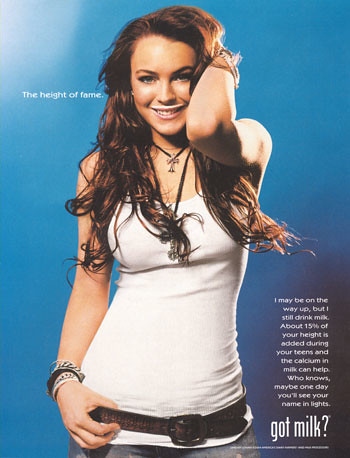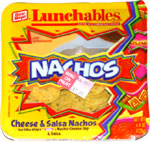
In the 90s, democracy was a dying enterprise. Voter turnout had sunk to new lows, and Americans seemed generally apathetic and disinterested in the political arena. Citizens began questioning what effect could their single vote possibly have on the larger problems facing America. Disillusioned with the perceived ineffectiveness of their role as an individual in a vast democracy, many began boycotting elections altogether.
Unless, of course, we were voting for key M&M colors. That was a completely different story.
In 1995, the world changed forever. Okay, so maybe it was just the candy world, and it was really just a color switch, but to some this symbolized a reignition of the democratic spirit. With the surrounding years' non-presidential national elections pulling in numbers in the 35-38% range of all voter-age citizens, the people had spoken. Or rather, had not spoken; US voter rates were in a slump. Those running for office should perhaps have employed the higher-ups at the Mars Corporation on their campaign staffs, as these employees had devised a brilliant solution to rising anti-voting sentiment.
Children.
Yes, that's right, children. As American Idol would find nearly a decade later, eliminating age restrictions and allowing multiple votes conveniently available over a toll-free phone line seems a surefire way to encourage voting.
What real difference can children make? Can a candy vote really arouse interest to the point that people will take to their phones to make their voices heard?
A lot. And yes.
In 1995, a decision was made. The Mars company was to cease production of tan M&Ms. Scary but true, tan M&Ms were once allowed to cohabit our bags with the more delicious-looking colors. Luckily, the people at Mars/M&Ms saw the errors of the 50+ years of tan-producing ways. Reasons for the switch were vague and unclear; were people speaking up against tan M&Ms? Were they upset that tan was essentially a knock-off of the coexisting brown M&M? Were they concerned about their melanoma risk? No one knows for sure.

Whatever the reason, a decision was made and a massive marketing campaign launched. In a second's time, tan M&Ms were a thing of the past. Suddenly, according to a multitude of M&M-related election propaganda, it was up to us to pick a new color. Really, us! We could be a part of history. Well, candy history. If such a an area of study exists. Well, either way, it seemed like a pretty legitimate endeavor in which to partake.
Suddenly, the playground was in an uproar; which color were you going to vote for? The options were finite (pink, purple, and blue) and the constituency fiercely divided. Unfortunately, M&Ms major gaffe was picking a majority of gender-biased hues for their new color options. It became the cool thing to pick blue, because we were all fairly certain it was going to win. None of the boys in the four-square court were up to being outed for placing a vote for purple or pink, and so it went.
All it took was a call to the toll-free 1-800-FUN-COLOR hotline. You're not mistaken, that's too many numeric letter equivalents, and some of us had a quiet moment of shame in realizing the line was already ringing as our dialing went on and on. It seemed like a relatively straightforward enough procedure, but the controversy over your vote was deep-seated. Editorial pages were flooded with comments on the color controversy; no forum or open space was safe from color-specific propaganda. Many elementary school classes in a half-hearted attempt to educate our nation's youth on the value of democracy conducted their own in-school votes. This probably did not play a major role in spurning interest in democracy, but in candy instead. Though politicians may not have been overly grateful for these diluted civic lesson, many dentists certainly felt it's sweet impact.
There was also the inexplicably hardcore "no change" movement, for which people sent impassioned emails and letters to friends, begging them to call in and select the "no change" option. Staunch in their conservative traditional M&M values stance, this small but vocal contingency sought to spread the word that it was possible to retain the tan M&Ms if you would just listen to them and do everything in your power to halt all progress at any cost. While there is no conclusive evidence to this end, many prominent scholars theorize that these people are now the ones writing the voiceover scripts for "The Gathering Storm" commercials.
Over 10 million votes were cast. I'm sorry, I don't know if you caught that one. 10 million. Really. We can't pull together a decent crowd to decide who will hold the fate of our country in his hands, but dammit if we're going to be stuck with pink M&Ms. I mean, that's just priorities.

Blue won by a landslide, with over 50% of votes cast in its favor. Eager to ride the crest of this marketing wave to its final washup, the Mars corporation quickly released a series of self-congratulatory ads highlighting the inherent desirability of Blue as a character. Already utilizing Red and Yellow as official "spokescandies", advertisers hastily inserted the enviable Blue character into the ad campaigns.
Ah, yes. There's nothing quite like self-induced asphyixiation to make you feel like one of the gang. Despite Blue's undeniable coolness, his manners with our old standards was a bit questionable. Stil, their desire to be like him reaffirmed our feeling that we indeed had made the right color choice and set the framework for susceptibility to future peer pressure.
Red and Yellow were persistent at their attempts to illustrate to us just how cool our Chosen One really was in this follow-up ad:
Really, BB King? I didn't realize M&Ms could pull such prime guest stars. It's still up in the air as to whether or not Red and Yellow's self-described "blues" were on par with anything King ever recorded, but I suppose it's all in the context.
The novelty of blue has waned slightly since the more recent 2002 global color vote (winner: purple, though they have mysteriously disappeared from our bags) and the hordes of customizable colors available at M&M World and online. Now that you can superimpose a photograph of yourself onto any color M&M you can imagine, the excitement over blue M&Ms may pale somewhat in comparison.
Regardless of current M&M progress, we can look back to our own unexplained passion for selecting a new shade of candy-coated chocolate. Though we may mourn for the defeated colors, our concerns are largely unwarranted; after all, these customizable colored candies have gone on to lead rich, chocolatey lives of coordinating colors for wedding parties, baby showers, and bar mitzvahs.
And if there's still a shred of insecurity about their loss, well, that's where the hard candy shell comes in.




















